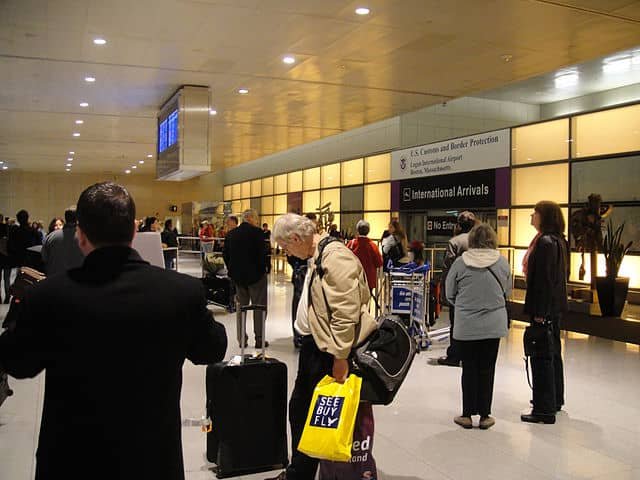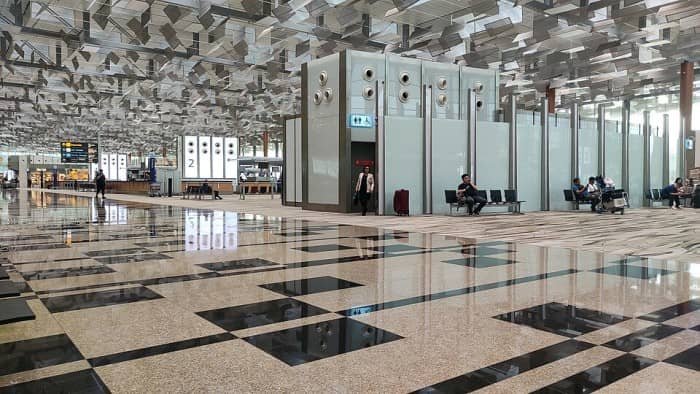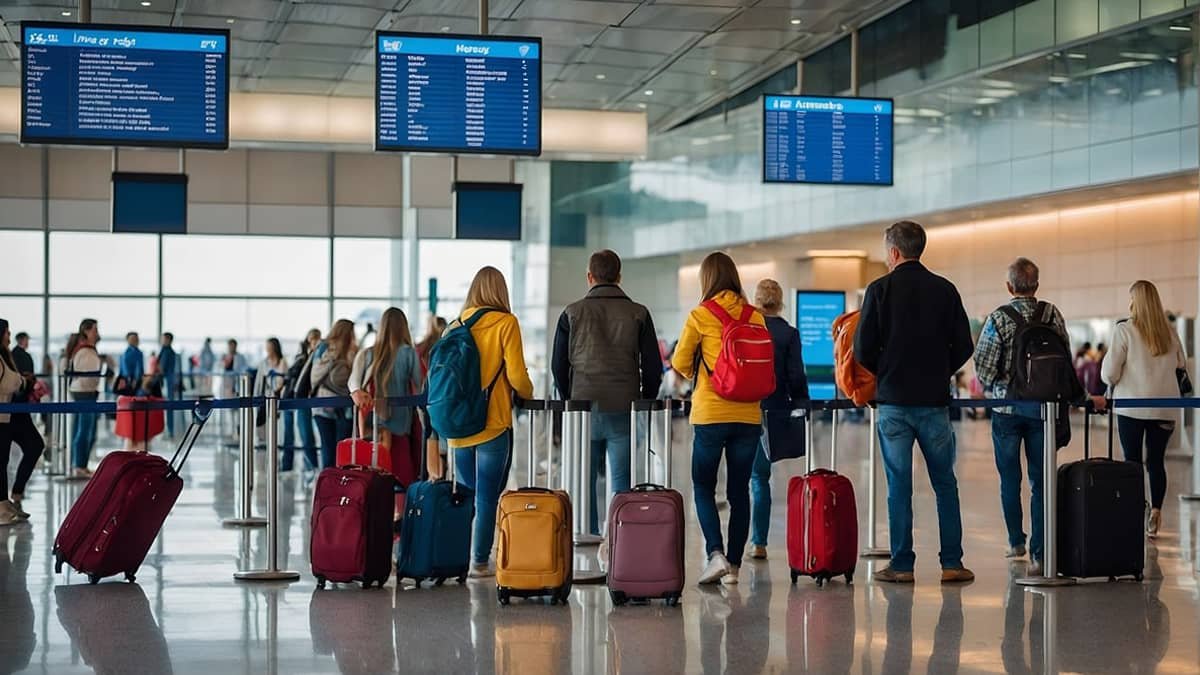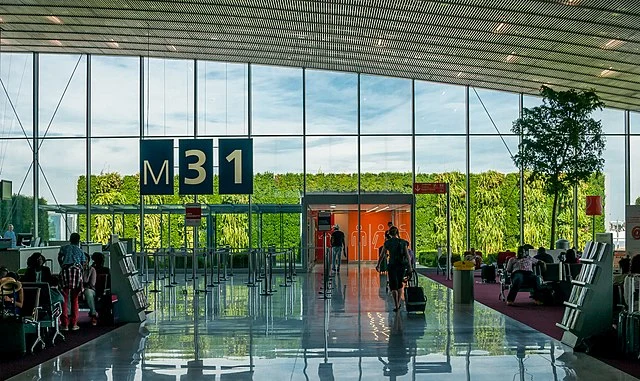The Top 10 Busiest Airports in the United States in 2024
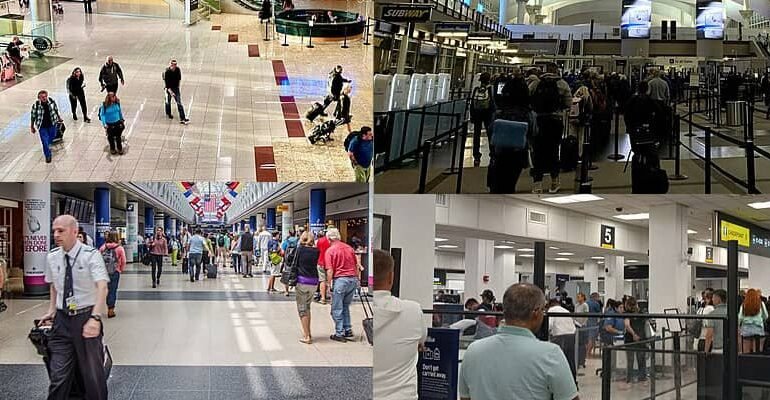
The American aviation industry continues its strong recovery in 2024, with passenger traffic reaching new heights. While several U.S. airports hold their own against international giants, the domestic market remains a powerhouse in global travel. This article dives into the top 10 busiest airports within the United States, based on passenger traffic, offering insights into the key players shaping the American air travel landscape.
1. Hartsfield-Jackson Atlanta International Airport (ATL), Georgia
Reigning supreme for over two decades, Atlanta’s Hartsfield-Jackson International Airport holds the undisputed title of the busiest airport in the US, and even North America. Boasting a staggering 104.6 million passengers in 2023 [source:11Alive.com], ATL is a major hub for Delta Air Lines, contributing to its extensive domestic and international reach. The airport’s efficient design, with multiple runways and concourses, allows for smooth traffic flow, minimizing delays for passengers.
Number of Passengers Handling- 104.6 Million Passengers
Transport Area- Hartsfield-Jackson Atlanta Airport’s Ground Transportation Center at the Domestic Terminal offers trains, shuttles, taxis, and rental car access.
Number of Flights
- Total Movements in 2023: 775,818
- Estimated Number of Flights (half of movements): 775,818 / 2 = 387,909
Explore More- List of the Best Airport Lounges at Hartsfield–Jackson Atlanta International Airport
2. Dallas/Fort Worth International Airport (DFW), Texas
Occupying a massive land area in Texas, Dallas/Fort Worth International Airport (DFW) takes the second spot with over 82 million passengers annually. DFW serves as a central hub for American Airlines, offering a multitude of domestic and international connections. The airport’s strategic location, midway between Dallas and Fort Worth, makes it a convenient travel option for both cities’ residents.
Number of Passengers Handling- 82 Million Passengers
Number of Flights
- Total Movements: 690,000
- Estimated Number of Flights: 690,000 / 2 = 345,000
Transport Area– Dallas/Fort Worth International Airport (DFW) offers extensive transportation options including taxis, shuttles, rental cars, and public rail connections to Dallas and Fort Worth.
Explore More- List of Top Airport Lounges in Dallas Fort Worth International Airport
3. Denver International Airport (DEN), Colorado
Nestled amidst the majestic Rocky Mountains, Denver International Airport (DEN) ranks third with over 77.8 million passengers. DEN serves as a major connecting point for United Airlines and enjoys a strategic location for flights to and from the West Coast, East Coast, and Latin America. The airport’s unique design, featuring a distinctive white roof resembling snow-capped peaks, is a landmark in its own right.
Number of Passengers Handling– 77.8 Million Passengers
Transport Area– Denver International Airport’s Ground Transportation Center on the west end of the Jeppesen Terminal offers trains, buses, taxis, and rental car access.
Number of Flights- The exact number of flight movements at Denver International Airport (DEN) in 2023 isn’t publicly available, but you might find data through Denver Airport press releases, reports, or contacting them directly.
Discover More- Top 8 Airport Lounges in Denver International Airport (DEN)
4. Chicago O’Hare International Airport (ORD), Illinois
Chicago’s O’Hare International Airport (ORD) holds the fourth position, handling over 73.9 million passengers. ORD is a major hub for United Airlines and American Airlines, providing extensive domestic and international connections. Despite its high volume, the airport has undergone significant renovations to improve passenger experience, including streamlining security checkpoints and baggage claim areas.
Number of Passengers Handling- 73.9 Million Passengers
Transport Area– Chicago O’Hare’s transportation area, accessible from all terminals, offers Blue Line trains to downtown, buses, shuttles, taxis, and rental car facilities.
Number of Flights
- Total Movements: 720,582
- Estimated Number of Flights (half of movements): 720,582 / 2 = 360291
Discover More- Top 8 Airport Lounges in Chicago O’Hare International Airport
5. Los Angeles International Airport (LAX), California
The iconic Los Angeles International Airport (LAX) secures the fifth spot, welcoming over 75.1 million passengers annually. LAX serves as a major gateway to the West Coast, attracting both domestic and international travelers. The airport offers connections to major airlines like American Airlines, United Airlines, and Delta Air Lines, making it a convenient starting point for exploring California and beyond.
Number of Passengers Handling- 75.1 Million Passengers
Number of Flights
- Total Movements: 575,097
- Estimated Number of Flights (half of movements): 575,097 / 2 = 287548
Transport Area- Los Angeles International Airport (LAX) offers a variety of transportation options at designated areas outside each terminal, including buses, shuttles, taxis, ridesharing services, rental cars, and a courtesy shuttle to the Metro Rail station.
6. Miami International Airport (MIA), Florida
Miami International Airport, a vital gateway to Latin America and the Caribbean, secures the sixth position. MIA serves as a major hub for American Airlines and caters to a significant international market. Additionally, Florida’s status as a popular tourist destination contributes to its impressive passenger traffic figures.
Number of Passengers Handling- 68.4 Million Passengers
Transport Area- Miami International Airport (MIA) offers a mover train to connect between terminals, MIA Mover to reach the Rental Car Center and Miami Central Station with trains, buses, taxis, and ride sharing services.
Number of Flights
- Total Movements: 459,454
- Estimated Number of Flights (half of movements): 720,582 / 2 = 229727
7. Harry Reid International Airport (LAS), Nevada
Harry Reid International Airport, formerly known as McCarran International Airport, caters primarily to the leisure travel market. Located in Las Vegas, Nevada, this airport experiences a surge in passenger traffic due to the city’s status as a global entertainment and gambling destination.
Number of Passengers Handling- 64.1 Million Passengers
Number of Flights- While the exact number of flight movements for Harry Reid International Airport (LAS) in 2023 isn’t available on their website or through readily accessible public sources.
Transport Area- Harry Reid International Airport (LAS) offers shuttle buses between terminals, with connections to public buses, taxis, rideshare services, and rental car facilities (reached by separate shuttle).
8. Orlando International Airport (MCO), Florida
Orlando International Airport, another Floridian entry on this list, caters to the booming theme park tourism industry. MCO serves as a major hub for international travelers seeking access to Central Florida’s world-famous attractions.
Number of Passengers Handling- 61.7 Million Passengers
Number of Flights:
- Total Movements: 405,924
- Estimated Number of Flights (half of movements): 405,924 / 2 = 202962
Transport Area- Orlando International Airport (MCO) provides ground transportation on Level 1, with shuttles, taxis, rideshare pick-up zones, and rental car facilities accessible via trams.
9. Phoenix Sky Harbor International Airport (PHX), Arizona
Phoenix Sky Harbor International Airport, a major hub for American Airlines and Southwest Airlines, experiences significant growth in 2024. PHX caters to a growing domestic market and benefits from Arizona’s position as a popular tourist destination, particularly during the winter months.
Number of Passengers Handling– 58.2 Million Passengers
Number of Flights:
- Total Movements: 454,665
- Estimated Number of Flights: 454,665 / 2 = 227332
Transport Area- Phoenix Sky Harbor International Airport (PHX) offers travelers a PHX Sky Train for terminal connections, rental car center access, and a nearby Valley Metro Rail station, alongside public buses, taxis, rideshares, and terminal parking.
10. Seattle-Tacoma International Airport (SEA), Washington
Seattle-Tacoma International Airport, a major hub for Alaska Airlines, secures the tenth position. SEA caters to a growing domestic market, connecting passengers across the Pacific Northwest and beyond. Additionally, it serves as a gateway to international destinations in Asia.
Number of Passengers Handling– 55.9 Million Passengers
Number of Flights:
- Total Movements: 422,508
- Estimated Number of Flights (half of movements): 422,508 / 2 = 211254
Transport Area- Seattle-Tacoma International Airport (SEA) offers a multimodal transport area with options like light rail, buses, shuttles, taxis, rideshares, courtesy shuttles for hotels, and rental car facilities.
The American Advantage: A Hub-and-Spoke System
The dominance of U.S. airports on this list reflects the strength of the “hub-and-spoke” system in the American aviation industry. Major airlines like Delta, American, and United operate extensive networks with these airports as central hubs. Passengers flying on these airlines can easily connect to a vast array of domestic and international destinations through these central points. This system fosters efficiency and convenience for travelers, contributing to the high passenger volumes seen at these U.S. airports.
Looking Ahead: Challenges and Opportunities
While the American aviation industry enjoys a strong position, challenges remain. Aging infrastructure at some airports requires modernization to handle increasing passenger traffic and ensure a smooth travel experience. Additionally, competition from international players and the rise of low-cost carriers could put pressure on established airlines and their hub airports.
However, the future also holds significant opportunities. Continued economic growth, particularly in the Southeast and West Coast regions, is expected to drive passenger demand at major U.S. airports. Technological advancements in areas like automation and security screening could further improve efficiency and passenger throughput. Additionally, investments in sustainable aviation practices and infrastructure will be crucial for U.S. airports to maintain their competitive edge globally.
Conclusion
The top 10 busiest U.S. airports in 2024 represent a diverse group, catering to varying travel needs. From the massive connecting hubs of Atlanta and Dallas/Fort Worth to the leisure travel destinations of Las Vegas and Orlando, these airports play a vital role in the American economy and connect people across the globe. As the aviation industry continues to evolve, U.S. airports will need to adapt and innovate to maintain their leading position in the global air travel landscape.

